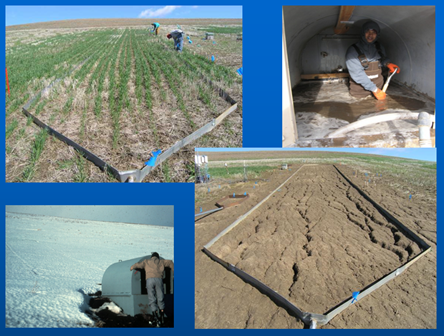
At the Palouse Conservation Field Station, located near Pullman, WA, plot studies with treatments that include multiple tillage operations and no residue exhibited large losses of soil and water in surface runoff, whereas direct-seed treatments have shown negligible runoff and erosion. Direct seeding reduces energy costs, loss of precipitation to runoff, and provides off-site environmental benefits.
It is extremely important in our agricultural research, for us and for stakeholders to be aware of how current and potential future risk management policy and programs address the impact of extreme weather events and provide options that promote conservation and sustainable intensification. Studying past long-term weather events and how they have affected soil erosion in the Pacific Northwest helps us to provide those options:
Long-Term Erosion Trends on Cropland in the Pacific Northwest Paper PNW05-1002, presented by D. K. McCool (USDA-ARS Supervisory Agricultural Engineer) and Dennis Roe (USDA-NRCS Conservationist/Crop Scientist) at the ASAE PNW Section Meeting, Alberta, Canada, September 22-24, 2005
Long-Term Erosion Trends on Cropland in the Pacific Northwest Poster, by Don McCool (USDA-ARS) and Dennis Roe (USDA-NRCS), displayed at the ASAE PNW Section Meeting, Alberta, Canada, September 22-24, 2005
Conclusions from this study showed that:
- Soil erosion had been decreasing during the last 20 years of the study, and that it was a result of a combination of a more benign weather pattern and increased application of conservation practices, and
- Data from a 43-year erosion survey (Water Years 1940 through 1982) in southeastern Washington and analysis of climate records indicated that major precipitation or snowmelt events on previously frozen soil were a factor in erosion during each of the 11 years in which approximately 42 percent of the total erosion occurred during the 43-year period. Precipitation during thaw was positively correlated with soil erosion.
